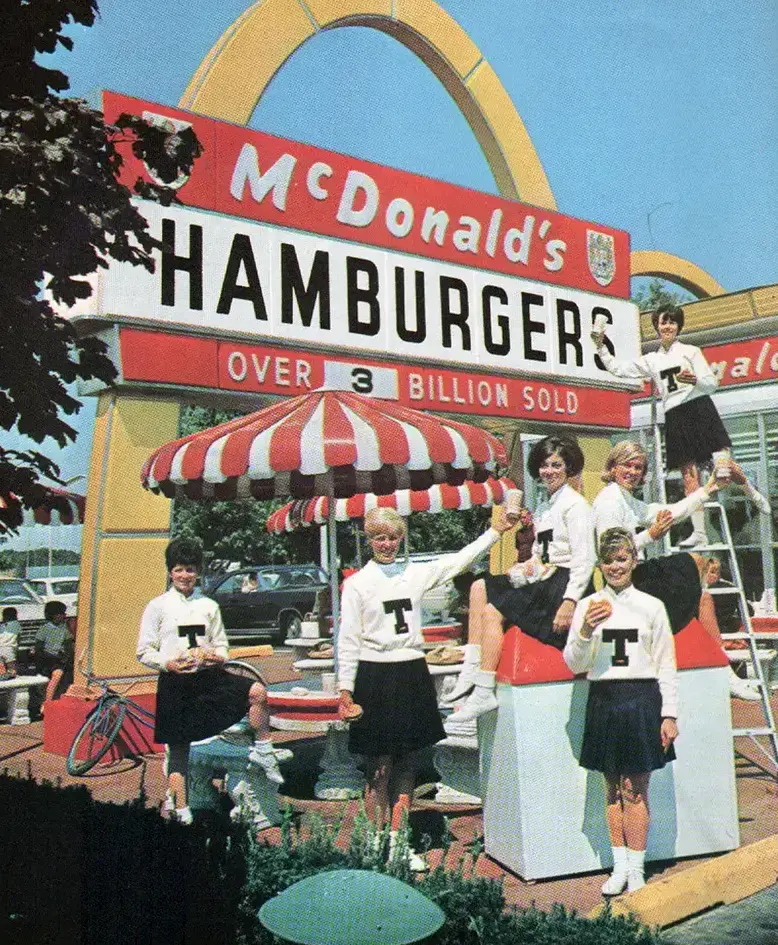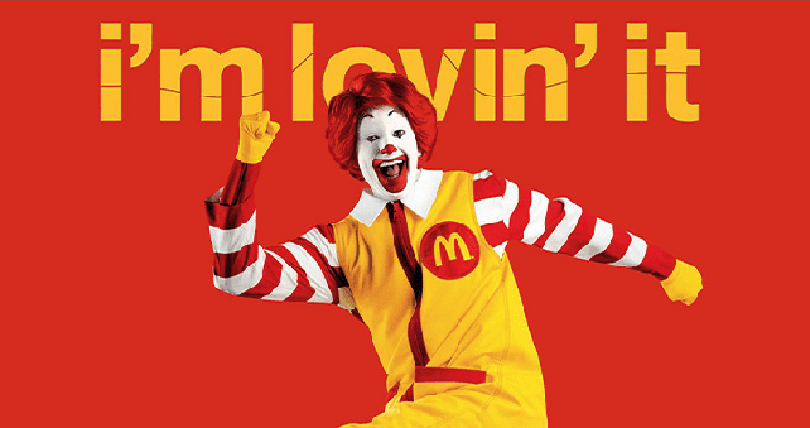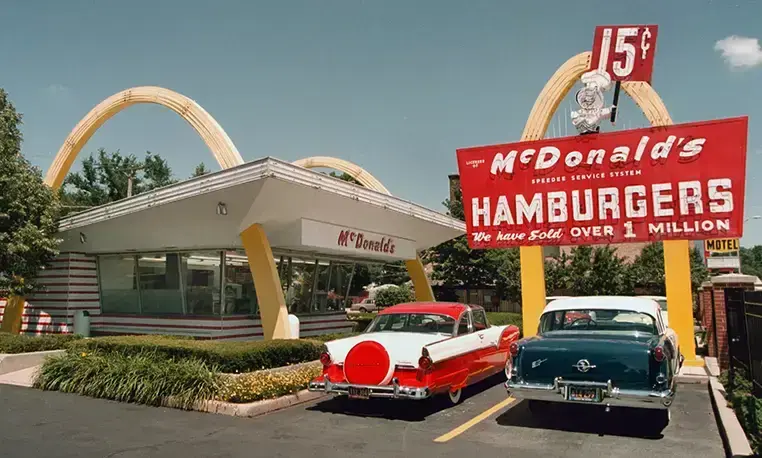At the corner of E Street and West 14th in San Bernardino stands an unassuming building with bright yellow arches. Today, it’s home to the unofficial McDonald’s Museum — but once, this very spot sparked a story that would transform not only American fast food but the way the entire planet eats.
The story of McDonald’s is more than a tale of burgers and fries. It’s the story of California — the place where dreamers become entrepreneurs, where innovation turns into lifestyle, and where the American idea of “fast, easy, everywhere” was born.
The First Kitchen of the Future
In 1940, brothers Richard and Maurice McDonald opened a small drive-in called McDonald’s Bar-B-Q. The menu featured 25 items, but in 1948 they did something radical: they shut down, redesigned everything, and reopened with a stripped-down concept simply called McDonald’s.
Now there were only nine menu items — hamburger, cheeseburger, fries, milkshake, coffee, Coke, orange juice, and pie. Everything was made almost instantly. It was the world’s first “assembly-line kitchen”: each cook performed a single task — grilling patties, adding cheese, wrapping burgers.
The brothers turned cooking into an engineering process. Their goal was simple: minimum time, maximum consistency. In postwar California — the land of speed, cars, and optimism — their system fit perfectly.

The Drive-In That Defined a Generation
In the 1950s, Southern California was the epicenter of car culture. Families cruised the highways, tuned their radios, and stopped for a quick bite. Drive-ins were everywhere, but the McDonald brothers elevated the idea into a philosophy — fast, clean, reliable.
California became the testing ground for a new kind of service: no carhops, no waiting, no surprises. You walked up to the window, ordered, got your meal in under a minute — and drove off into the sunset.
Ray Kroc and the Birth of an Empire
In 1954, a traveling milkshake-machine salesman named Ray Kroc visited the McDonalds in San Bernardino. He was stunned to find a small restaurant ordering eight multi-mixers at once — a sign of staggering customer volume.
Kroc instantly saw the future. He convinced the brothers to franchise their system nationwide. In 1955, McDonald’s Corporation was born, and the first official franchise opened in Des Plaines, Illinois.
Yet the soul of the brand remained deeply Californian: simplicity, optimism, sleek design, and the aesthetics of the open road. Even the now-iconic Golden Arches drew inspiration from mid-century SoCal architecture.
California Design, Served Hot
Few fast-food brands are as tied to design as McDonald’s. In 1953, architect Stanley Meston created the two-arch prototype that would define the brand’s identity. Bold, futuristic, glowing in neon — it embodied the sunny, confident style of postwar California.
The look became so powerful that the “California arches” evolved into one of the most recognizable symbols on Earth.
McDonald’s and the American Dream
By the 1960s, as the U.S. entered an era of prosperity, McDonald’s became shorthand for middle-class comfort: affordable, predictable, the same everywhere. It offered a sense of belonging — a unifying ritual in a sprawling, fast-moving nation.
For California’s immigrants — Mexicans, Filipinos, Vietnamese — McDonald’s became something else: an entry point into the American experience, a place where you could eat cheaply and feel like part of the dream.
Hollywood, Advertising, and Childhood
Where else could the culture of mass marketing flourish if not in California? Here, McDonald’s rolled out its first big ad campaigns, TV spots, and the now-legendary Ronald McDonald.
The brand became pop culture. It appeared in movies, songs, even political debates. Its icons — the arches, the red-and-yellow palette, the Big Mac — merged with America’s collective memory.

From San Bernardino to the World
Today, hundreds of McDonald’s restaurants operate across California. Yet many locals still see the brand not just as a business, but as part of the state’s cultural DNA.
At the San Bernardino museum, visitors can explore the company’s humble beginnings — the original menu, vintage uniforms, early cash registers. Fans come from around the world to see where the fast-food era truly began.
Reinvention, California-Style
But California doesn’t stand still. Today’s McDonald’s is adapting again — offering plant-based burgers, cutting plastic waste, and rolling out digital kiosks. In a state that prides itself on health, innovation, and sustainability, the company has no choice but to evolve.
It’s a striking irony: the brand once synonymous with speed and mass production now positions itself as a voice in the conversation on climate and responsible consumption.
McDonald’s as California’s Mirror
The story of McDonald’s is the story of California itself. Here, in San Bernardino, someone decided that taste, efficiency, and design could be a system. Here, entrepreneurship met consumer culture — and a simple hamburger became a global trend.
California has always been America’s laboratory of the future — in film, tech, environment, and now, even in fast food. McDonald’s became its culinary Hollywood: selling not just food, but a lifestyle.
A Nostalgic Aftertaste
Stand on E Street today, close your eyes, and picture 1948. You can almost hear the sizzle of the grill, the jingle of coins, the chatter of teenagers dreaming big. They had no idea they were witnessing the birth of a new era.
McDonald’s became more than a restaurant — it became the edible symbol of the California dream: bold, efficient, and open to everyone. And even as we chase organic cafés or vegan burger joints today, somewhere deep inside we still remember that first warm cheeseburger, eaten under the sunlit arches of Southern California.






